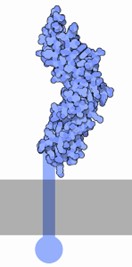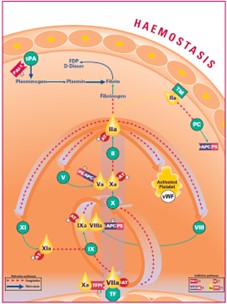Tissue Factor (TF) is a transmembrane glycoprotein that serves as the primary activator of blood coagulation in vivo, through binding to factor VII/VIIa with subsequent limited proteolysis of factor IX and factor X, leading to thrombin generation.


Under physiological conditions, tissue factor (TF) is absent in cells coming in direct contact circulating blood.
Microvesicles (MVs) have been described as procoagulant entities due to the presence of negative procoagulant phospholipids, mainly phosphatidylserine (PS), they can carry at their surface, on the external leaflet of the membrane.
In addition, the presence of TF on subsets of MVs significantly contribute to their procoagulant activity.
Under normal physiological conditions, no significant levels of MVs bearing TF are typically detected. However, under pathological conditions, elevated plasma levels of MV TF activity have been observed in patients in different pathological conditions such as certain cancer types, sepsis and arterial, along with venous thromboembolic diseases.[Tesselaar et al.], [Lacroix et al.] [Faille et al.]
Reliable and accurate measurement of TF expression (as an antigen), or its activity in cells and MVs, is a prerequisite to explore the role of TF in normal hemostasis and various conditions, thromboembolic diseases in particular.
With regards to sensitivity and reliability, TF activity measurements have benefit compared to antigen assays.

